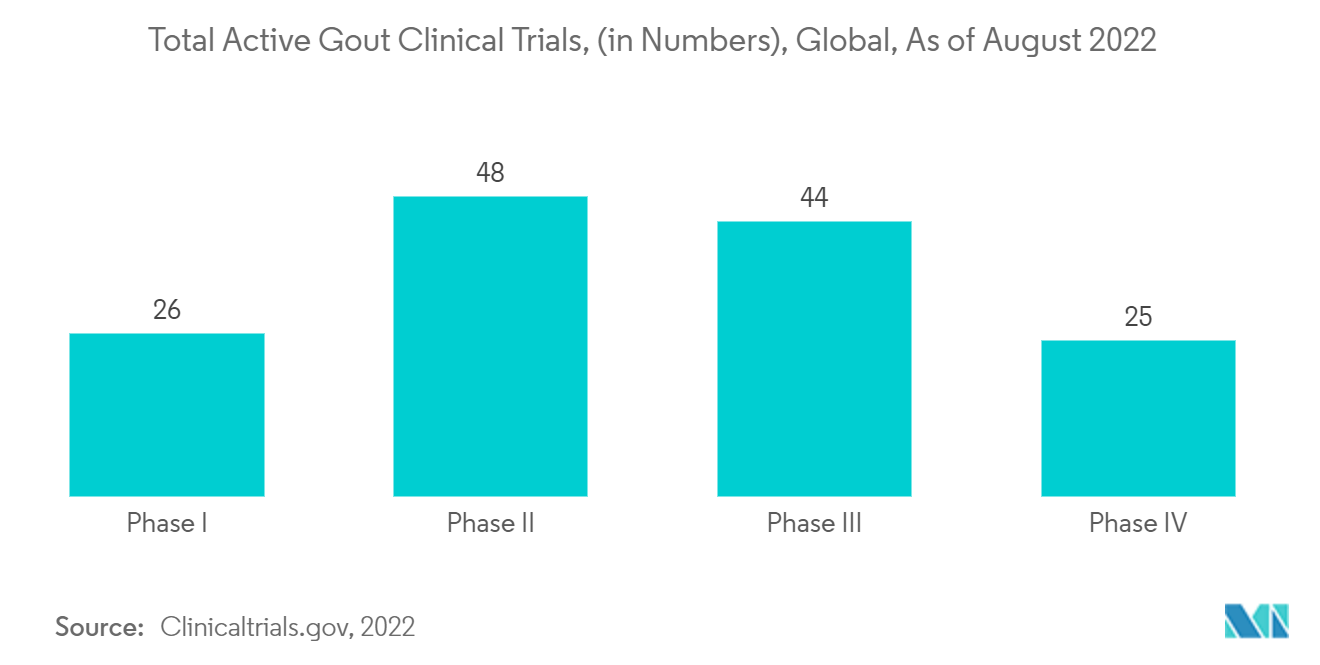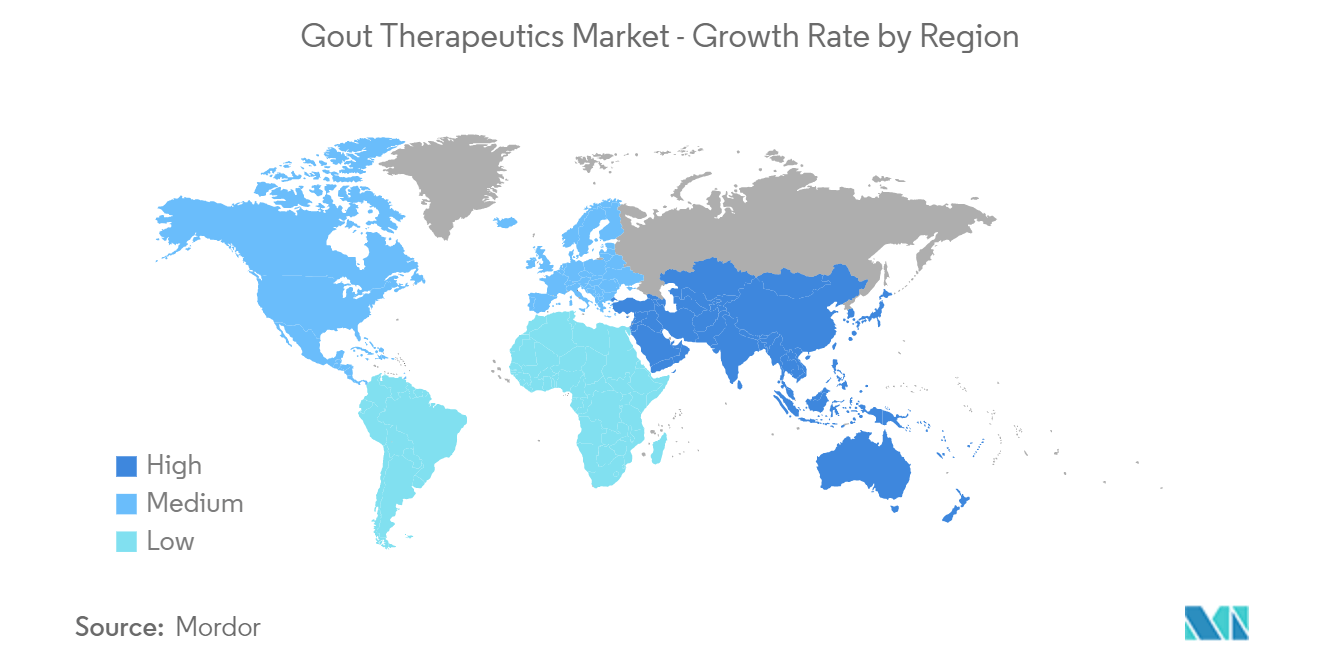Market Trends of Global Gout Therapeutics Industry
This section covers the major market trends shaping the Gout Therapeutics Market according to our research experts:
Antihyperuricemic Agents (Urate-Lowering Drugs) Segment is Expected to Grow with High CAGR Over the Forecast Period in the Gout Therapeutics Market
Gout is the most common form of inflammatory arthritis, characterized by painful and disabling acute attacks. It is caused by hyperuricemia and the deposition of urate crystals, in and around the joints. Antihyperuricemic agents are also called antigout agents. Anti-hyperuricemic medications lower blood uric acid levels either by speeding up urine uric acid excretion or by preventing the production of extra uric acid. Some of the drugs that cause hyperuricemia conditions include salicylates, pyrazinamide, ethambutol, nicotinic acid, cyclosporin, 2-ethylamino-1,3,4-thiadiazole, fructose, and cytotoxic agents.
Some of the most common drugs used in this segment are xanthine oxidase inhibitors (allopurinol and febuxostat), uricosuric medications (benzbromarone, probenecid, and sulfinpyrazone), and uricases (pegloticase and rasburicase).
The antihyperuricemic agent segment is expected to witness significant growth over the forecast period owing to the factors such as the increasing adoption of these drugs for treating gout. For instance, according to an article published by the Annals of Rheumatic Diseases, in June 2021, titled 'Has the gout epidemic peaked in the UK? A nationwide cohort study using data from the Clinical Practice Research Datalink, from 1997 to across the COVID-19 pandemic in 2021', it has been observed that the incidence of gout was 0.98 per 1,000 persons in 2021, as compared to 1.07/1000 persons in 2020. In addition, as per the same source, the prevalence of urate-lowering prescriptions in gout increased from 36.72% in 2019 to 39.53% in 2021. Thus, the increasing prescription of urate-lowering drugs by physicians is likely to increase the demand for antihyperuricemia drugs, thereby fueling market growth.
In addition, the increasing company activities as well as rising clinical trials in developing drugs for the treatment of high uric acid, rising awareness campaigns regarding gout and its effects are also contributing to the market growth. For instance, in August 2021, Eisai and FUJI YAKUHIN CO., LTD. entered into a license agreement concerning dotinurad (generic name), a treatment for hyperuricemia and gout discovered by FUJI YAKUHIN, for development and distribution in five ASEAN (Association of Southeast Asian Nations) member states Indonesia, Malaysia, Myanmar, the Philippines, and Thailand. Under the agreement, Eisai acquired exclusive development and marketing rights for dotinurad in the said five countries from FUJI YAKUHIN, and FUJI YAKUHIN retained responsibility for manufacturing the formulation of dotinurad and supply to Eisai. Also, in March 2020, Horizon Therapeutics plc launched Down and Out Kidney, a campaign to highlight the damaging effects associated with the accumulation of uric acid and gout in people with chronic kidney disease (CKD).
Therefore, owing to the aforementioned factors, the studied market is expected to grow over the forecast period.

North America Dominates the Market and Expects to do Same in the Forecast Period
North America is expected to account for a major share of the gout therapeutics market over the forecast period, owing to the increasing prevalence of gout, the presence of well-established healthcare infrastructure, and the growing healthcare expenditure. For instance, according to the Organization for Economic Co-operation and Development (OECD), in June 2022, United States healthcare spending in 2021 was 17.8% of the total GDP of the country. Additionally, as per the Centers for Medicare and Medicaid Services, National Health spending is projected to grow at an average annual rate of 5.4% for 2019-2028 and to reach USD 6.2 trillion by 2028. As national health expenditure is projected to grow 1.1% points faster than gross domestic product per year on average over 2019-2028 the health share of the economy is projected to rise by 19.7% in 2028. Thus, the increasing healthcare spending is expected to increase company activities and government initiatives in developing remote patient monitoring, thereby fueling the market growth.
Moreover, the rising product launches are also contributing to the market growth over the forecast period. For instance, in July 2022, the United States Food and Drug Administration approved an expanded label of Horizon's Krystexxa for improving the treatment outcomes for patients with uncontrolled gout. Also, in January 2021, Dr. Reddy's Laboratories Ltd. launched Febuxostat Tablets, a therapeutic equivalent generic version of Uloric (Febuxostat) Tablets in the United States. The tablets are available in 40 mg and 80 mg strengths in bottle count sizes of 30 tablets.
Thus, owing to the aforementioned factors, the studied market is expected to grow over the forecast period.

